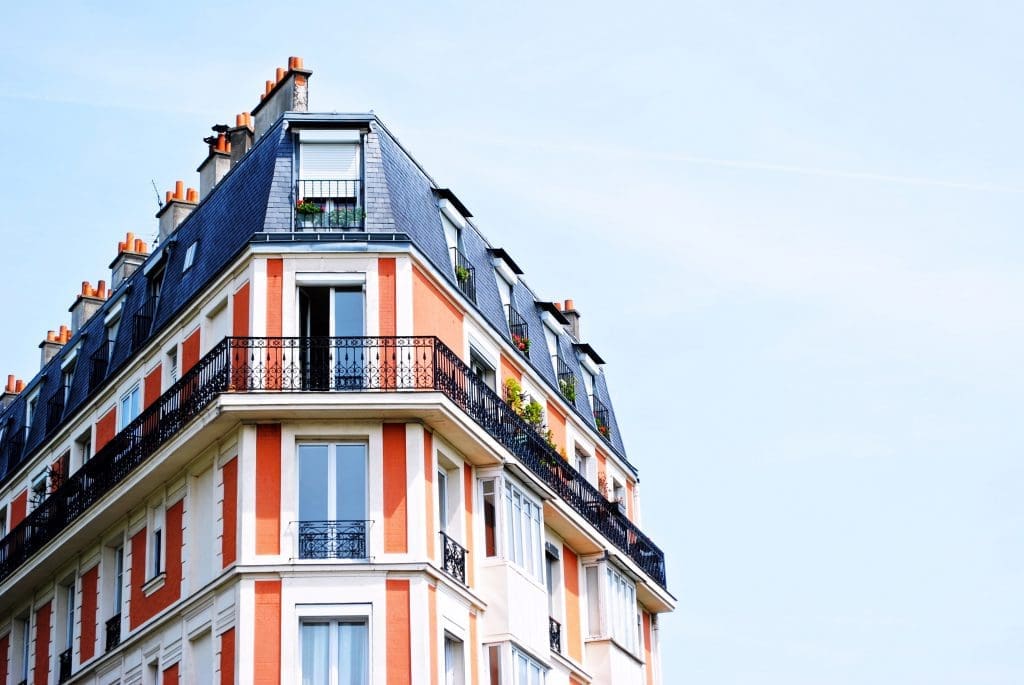

Airspace development is the modern solution to the UK’s urban housing crisis, particularly in London where there remains a shortage of affordable homes, despite the post-pandemic shift away from city living.
While building outwards may not be feasible in high-density areas, or can lead to urban sprawl or building over green-belt spaces, building up is a relatively untapped opportunity.
It’s estimated that the rooftops of London hold space for 180,000 new homes, enough real estate to meet the Mayor of London’s target of building 52,000 new homes a year in the capital, several times over.
So, developing upwards is an ingenious solution to an ongoing problem, and one that’s already been put to good use in New York and Paris.
But is airspace development a solution that favours developers and freeholders of an existing building over the future inhabitants of these new dwellings? Are there any discernible benefits to rooftop life, compared to other new or converted homes? And if this is the coming trend, is it a good or bad one for people and cities?
The good life above the roofline
Let’s start by looking at the kind of housing that airspace development provides.
High and mid-rise living has its own benefits. Living higher up brings better views and more natural light. In cities, it means less street noise and better air quality – both important for good mental and physical health, and significant if you live in a crowded place.
Homes and flats built a few stories up tend to be better for security, since they are difficult to access on the exterior from street level. They also provide more privacy and can provide a sense of space and freedom to city dwellers.
But it’s not just the homes themselves. The locations that rooftop developments open up are important too. In the UK, and particularly in big cities, space for development is in short supply.
It’s estimated that the UK has a shortfall of 1.2m homes to fill its current housing gap – rising to 4m by 2035 based on current needs, according to the BBC’s Housing Briefing.
Upspace’s rooftop developments create new homes that enable people to live near their places of work, their children’s schools, with access to London’s excellent public transport, amenities and cultural life.
And they join an existing community with social structures and pathways already in place. The new homes and residents slot into a residential way of life that has already been set up.
Upspace’s added advantages
All Upspace homes have additional benefits for anyone associated with the project.
Upspace retains the new rooftop homes for the private rental market, which means we have an ongoing interest in the original freehold property as well as the new development.
We aim to ensure the original character of the residential building is maintained, and no corners are cut during construction.
Property nightmares associated with poorly planned and constructed rooftop development just won’t happen, as Upspace has a stake – both financially and professionally – in a building’s future.
We bring together a wide range of property and safety experts for the project, and reduce lead times, disruption and carbon emission by off-site construction.
The 100% building safety record of Upspace is a testament to our diligence and commitment to building safety.
Benefits to existing residents
The clearest benefit to existing freeholders is financial. Selling the air rights above their building to a developer like Upspace has financial rewards.
And it’s possible that in the future property valuations may take into account possible airspace rights.
So while a group of flat owners can bring in a lump sum by selling the shared air rights over their properties, they can at the same time increase the value of their flats.
Currently, the typical payday for a London airspace development would be in the tens, rather than hundreds, of thousands of pounds per person.
Existing freeholders and property owners also experience these benefits:
- The renovation of the building can increase the overall value of the existing properties leading to an average 3-4% increase in capital values.
- With an Upspace development, the roof will be replaced entirely and carry a 20-year guarantee, meaning the cost of roof repairs are covered for at least two decades.
- Other renovations may include the facade of the building and renovation of communal spaces such as corridors or reception places.
- Improvements are often made to the overall energy efficiency of the building, decreasing ongoing energy costs for residents.
Environmental upsides
Airspace development is far more environmentally friendly than traditional development schemes, as older buildings are overhauled, upgraded and extended rather than being demolished and rebuilt entirely.
Architects have recently called for less demolition of buildings in order to fight climate change, because so much carbon is emitted creating the steel, cement and bricks for new buildings
Our off-site construction methods used for rooftop buildings also reduce carbon emissions, as well as reducing time on site and construction noise, dust, and pollution.
How communities gain
Developing above existing buildings reduces the pressure to build on green spaces, which often play a vital role in community cohesion and add value to areas of a city. And it reduces the potential for overcrowding caused by shoe-horning new homes in street-level brownfield sites.
In a nutshell, airspace development can help supply some of the space needed to solve the UK’s housing crisis. Building upwards instead of out reduces urban sprawl.
There are environmental benefits to adapting rather than demolishing buildings, and building off site.
And finally, the new homes in the sky offer affordable housing solutions for people that fit comfortably into the existing fabric of city life.










